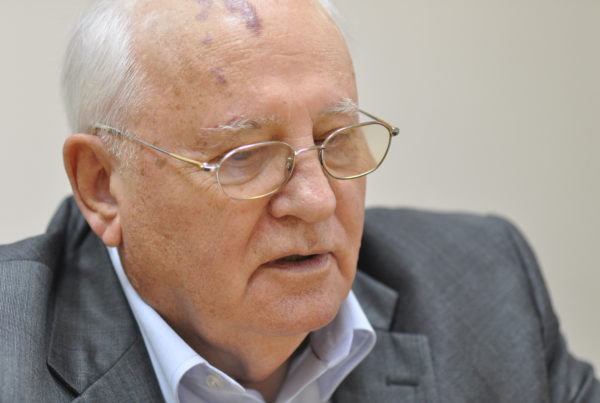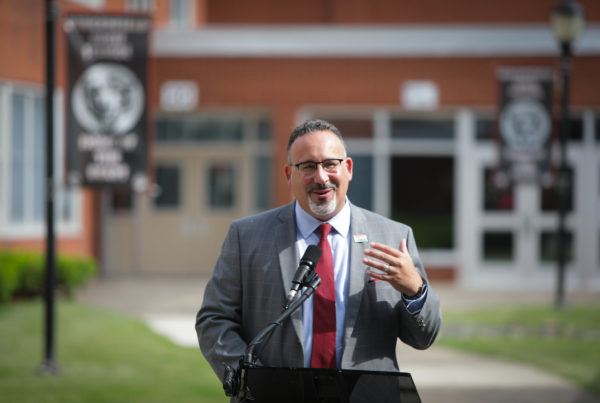Wednesday marks International Overdose Awareness Day, and according to the Centers for Disease Control and Prevention, synthetic opioids like fentanyl are the leading cause of overdose deaths in the United States.
In the past, China has been cited as a primary source for most of the illicit fentanyl in the U.S. But in recent years, a growing amount of Mexican-made fentanyl has been making its way onto U.S. streets. Now, fentanyl produced by two prominent cartels appears to be dominating the market here, the Wall Street Journal reports.
While Mexican cartels have historically trafficked in marijuana, heroin and cocaine, the ease and relatively low cost of fentanyl production has been profitable for the gangs as they seek to corner new markets, reporter José de Cordoba told the Texas Standard. Listen to the interview above or read the transcript below.
This transcript has been edited lightly for clarity:
Texas Standard: Historically, drug cartels in Mexico trafficked marijuana, heroin and cocaine. So what are some of the factors behind this shift to fentanyl production?
José de Cordoba: Well, fentanyl is a lot easier to traffic. It’s a lot easier to smuggle because fentanyl is a lot more powerful than heroin, which the Mexican cartels, especially that the Sinaloa cartel was used to making – it still makes, by the way. And so it’s easier to manufacture, easier to smuggle. And so the profit margins are much bigger.
Is there a demand for fentanyl, per se? Or is it that it’s being used to increase the effect of other drugs, like, say, cocaine, heroin or something else?
Both. There’s a big demand for fentanyl itself. And also fentanyl, in some cases, is mixed with other drugs. So people sometimes take it by mistake. It’s mixed here with heroin that’s produced in Mexico in particular. But fentanyl has created its own demand. And the cartels are always thinking about broadening their market by introducing new products.
Can you say a little bit more about how these cartels are ramping up production? I mean, the volume of fentanyl that’s being produced in Mexico – you have to get the source ingredients. And I would imagine a lot of these are quite highly controlled substances.
Well, the thing about fentanyl is that it’s very easy to produce. And while the original formula might be put on a on a watch list, you just by switching a couple of the molecules in it, you can make a substitute. So it’s like playing whack-a-mole. So that that’s a big problem. Law enforcement is always playing catchup with smugglers.
You and your colleagues report that street fentanyl in the U.S. is actually coming from these Mexican cartels. Now, even though a lot of people think that it is, most of it is coming from China. Can you talk a little bit about the flow of fentanyl from Mexico to the U.S. and how is it getting in and where exactly is it going?
A lot of it is being produced in the state of Sinaloa, much of it around the city of Culiacan, which is the capital of Sinaloa. It’s made into a paste that that’s dried into a powder. And then it goes to pill makers – people associated with the cartels, mostly, who have bought pill machines from China, at least the one that I saw. And those just crank out enormous volumes of pills a day. And so, the number of pills being made is enormous. And they’re so easy to transport, it’s pretty much like chasing a needle in a haystack.
Is there reason to believe that this Mexico sourced fentanyl is more dangerous or toxic than previous iterations that were coming from China.
Well, the thing about the stuff made [in Mexico] is that I’ve been to a couple of labs now, and there’s absolutely no quality control. I think you’d have to be crazy to take a fentanyl pill after I saw them being made, because as you know, fentanyl is enormously dangerous. Is 50, 60 times more potent than heroin. It’s very easy to die from an overdose. And at least the labs that I saw, there’s really no quality control.
Is the Mexican government showing any signs of wanting to crack down on this? I know that U.S. officials are quite concerned. What about Mexican officials and what might they do?
I’m told they’re very aware of the fentanyl threat, especially to the U.S. I mean, it’s something that the United States brings up with their Mexican counterparts every time they meet. The cartels see it as mostly an export product to the U.S. And although you are starting to see reports of some deaths, but nothing like what’s happening in the U.S. it’s very hard to contain because they’re made in little tiny labs that can be set up for a couple of hundred dollars. The areas where they’re working, they have people who are watching for police or more than anything, for the military, which is the main security force cracking down on trying to find these labs. And so in those areas, the cartels sort of co-run those states. It seems to me, the drug trafficking has been in the fiber of the state of Sinaloa for generations. And there’s a whole drug culture there that’s hard to get rid of.
















